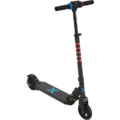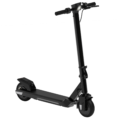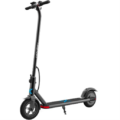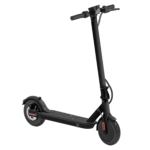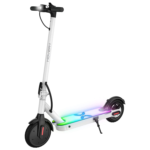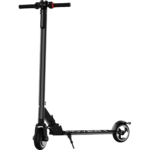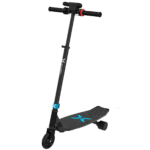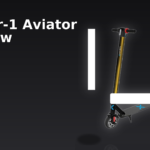- Home
- Scooters
- Electric Scooters
- Hover-1 Edge
Hover-1 Edge



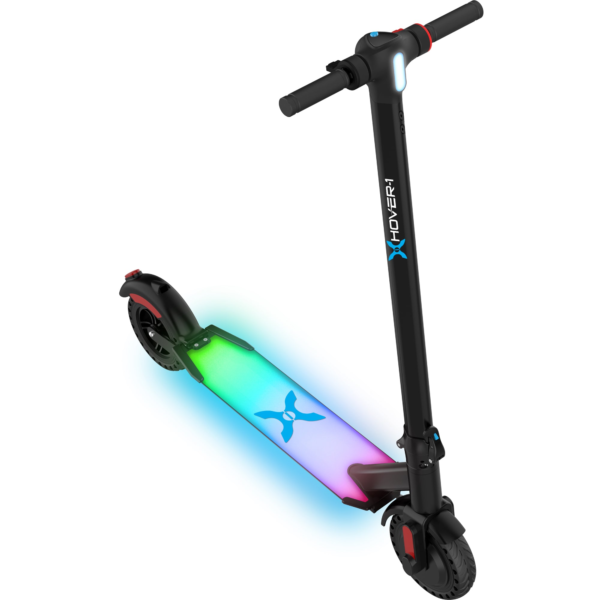
- Battery Range: 6 miles (10 km)
- Top Speed: 15 mph (24 km/h)
- Motor Power: 350 W
- Weight Capacity: 264 lb (119.7 kg)
- Charging Time: Not specified
- Scooter Weight: Not specified
PROS
- 15 mph (24 km/h) top speed
- Bluetooth speaker and deck lighting
- Rear shock for added comfort
- 8″ solid tires—no punctures
- 264 lb (120 kg) capacity
CONS
- Range only up to 6 miles (10 km)
- Battery specs not published
- No app control
- IP rating not specified
Table of contents
- What Is the Hover-1 Edge?
- How the Hover-1 Edge Works
- Key Specifications
- Design & Build Quality
- Performance Fundamentals
- Battery, Range & Efficiency
- Ride Quality & Comfort
- Braking & Safety Features
- Portability & Daily Usability
- Maintenance & Care
- Weather & Seasonal Considerations
- Hover-1 Edge vs Alternatives
- Who the Hover-1 Edge Is (and Isn’t) For
- FAQs
- Glossary
- Using the Hover-1 Edge Day to Day
- Practical Pros and Trade-Offs
- Final Thoughts
Looking for a simple, compact scooter for short city hops and campus rides? The Hover-1 Edge is a lightweight foldable e-scooter built for easy daily use. It focuses on straightforward controls, modest speed, and low-maintenance parts. Consequently, if you want a practical first scooter for errands, short commutes, or last-mile trips, this overview will walk you through the Edge in clear, no-nonsense detail. Alternatively, if you’re comparing compact scooters to bigger, longer-range models, see the Xiaomi Electric Scooter 4 Pro Max for a sense of what the high-capacity class offers.
What Is the Hover-1 Edge?
The Hover-1 Edge is a compact, entry-level electric scooter designed around convenience and predictable handling. It uses an 8-inch solid-tire setup, a 350W front hub motor, and a 36V battery rated at 4.0Ah. Additionally, the deck includes a small spring at the rear for shock absorption, and the cockpit centers around an easy-to-read LCD display. It folds quickly for trains, buses, or trunk storage and weighs about 24.9 lb (11.3 kg), which many riders can carry up a flight of stairs without strain.
Top speed is up to 15 mph (24 km/h) in “P2” high-speed mode, while a low-speed “P1” mode caps speed at about 9 mph (14 km/h) to help new riders ease in. Rated range is up to 6 miles (10 km) per charge under ideal conditions. Moreover, the brakes combine an electronic front brake with a classic rear foot brake. Because the tires are solid, you avoid flats and tube changes. That does trade some comfort; however, it improves day-to-day reliability.
How the Hover-1 Edge Works
Think of the Edge like a powered kick scooter with a simple brain and a steady heart.
- Motor & Controller: A 350W brushless hub motor in the front wheel provides drive. The controller sits in the stem assembly and meters current smoothly. Press the throttle and the controller feeds power in steps, which keeps acceleration predictable rather than jumpy.
- Battery: A 36V, 4.0Ah lithium-ion pack (about 144 Wh) stores energy in the deck. The scooter targets short, frequent rides rather than long journeys. As a result, a charge from empty typically takes about 4–5 hours, so overnight top-ups or mid-day charges are painless.
- Throttle: The right-hand thumb throttle is simple. You must kick-start the scooter to a walking pace before the motor engages. That safety step prevents accidental launches if someone bumps the throttle; meanwhile, it also encourages smoother starts.
- Brakes: You get two layers of control. The left lever triggers an electronic brake that slows the motor smoothly. For stronger stops, press the rear foot brake on the fender. Used together, they yield the shortest stopping distances on dry pavement.
- Display & Modes: The central LCD shows speed, battery bars, and icons for headlight and cruise control. Press once to toggle between P1 (learning mode) and P2 (full speed). Double-press the throttle at a steady pace to engage cruise control; press again or brake to disengage.
In short, the Edge favors stability and easy learning. It aims for clear feedback and minimal fuss so riders focus on the path ahead.
Key Specifications
Below are the official core specifications presented in tidy blocks with both imperial and metric units. Notably, these specifications reflect the official model labeling.
General
| Item | Spec |
|---|---|
| Model | H1-EDGE |
| Net Weight | 24.9 lb (11.3 kg) |
| Max Supported Weight | 264 lb (120 kg) |
| Min Supported Weight | 44 lb (20 kg) |
| Tire Type | Non-pneumatic (solid) tires |
| Tire Size | 8 in (front & rear) |
Performance & Power
| Item | Spec |
|---|---|
| Motor Power | 350W brushless hub motor |
| Max Speed | Up to 15 mph (24 km/h) |
| Speed Modes | P1 low (~9 mph / 14 km/h), P2 high (15 mph / 24 km/h) |
| Drive | Front-wheel hub |
Battery, Charging & Electrical
| Item | Spec |
|---|---|
| Battery Voltage / Capacity | 36V / 4.0Ah (≈144Wh) |
| Battery Type | Lithium-ion |
| Charge Time | Up to ~5 hours |
| Input Power Requirement | AC 100–240V, 50/60 Hz |
| Display | Central LCD (speed, battery, mode, icons) |
| Cruise Control | Yes (double-press throttle at steady speed) |
| Bluetooth Speaker | Integrated (pairs as H1-EDGE) |
Build & Dimensions (include folded dimensions)
| Item | Spec |
|---|---|
| Open Size (L × W × H) | 40.8 × 17.3 × 46.3 in (103.8 × 44 × 117.6 cm) |
| Folded Size (L × W × H) | 40.8 × 17.3 × 16.7 in (103.8 × 44 × 42.5 cm) |
| Frame | Aluminum |
| Rear Shock | Small spring for basic shock absorption |
| Kickstand | Included |
Safety & Control
| Item | Spec |
|---|---|
| Brakes | Electronic (front) + Mechanical rear foot brake |
| Headlight | Yes (LED) |
| Deck Light | Yes |
| Kick-to-Start | Yes |
| Operating Temperature | 32–104°F (0–40°C) |
| Water Resistance | No formal IP rating stated; keep scooter dry |
Features & Extras
| Item | Spec |
|---|---|
| Cruise Control | Yes |
| Speed Modes | P1 / P2 |
| LCD Indicators | Speed, battery, headlight, cruise |
| Bluetooth Speaker | Yes (multi-point pairing supported) |
Warranty & Compliance
| Item | Spec |
|---|---|
| Warranty | 90-day limited (parts & labor) for manufacturer defects |
| FCC | Contains FCC ID: 2AANZIDL |
| Bluetooth ID | BT ID: D044966 |
| UL / IP Rating | Not specified in the manual |
Design & Build Quality
The Edge leans into practical design. The aluminum frame keeps weight low yet resists daily scuffs. The deck has non-slip grip and a deck light for visibility. Furthermore, the rear spring is modest, but it tames small cracks and joints in pavement. You still feel rough patches; nevertheless, vibration is less abrupt than on a rigid tail.
The stem locks in place with a straightforward latch, and the folding clip slots into the rear fender for a compact package. Tolerances are typical for its class. There is a hint of stem play if you yank the bars, yet it stays quiet on smoother streets. The cockpit centers around a bright LCD that is legible in daylight. On the left, you get the electronic brake lever, while the right side hosts the throttle. Conveniently, the power/function button sits below the display for mode and light toggles.
Fit-and-finish is balanced for the price bracket. Molding lines and fastener heads are neat, and cable routing is protected. The kickstand is stable on flat ground. In small apartments, the folded package slides behind a door or under a desk without drama. Overall, the Hover-1 Edge presents clean, purposeful build quality that supports daily use.
Performance Fundamentals
Acceleration feel is measured and beginner-friendly. From a kick-start, the motor takes hold without a jerk. In P1, the Edge tops out around 9 mph (14 km/h), which helps new riders learn throttle control and stance. In P2, you reach up to 15 mph (24 km/h) on flat ground with a light breeze. It is not built for aggressive sprints, and that is the point: the ramp-up is smooth, and mid-throttle cruising is steady.
Cruising stability is solid for urban speeds. The 8-inch solid tires track straight on paved paths. Because they are not pneumatic, they do not absorb big bumps. On coarse asphalt, you will feel more buzz through the bars. Even so, the low weight and low center of gravity keep weaving in check. At top speed, the scooter remains composed if you stand relaxed with knees slightly bent.
Hill climbs on ~7–10% grades call for realistic expectations. On short rises, the Edge will slow but continue. On longer hills, you may need a push or a brief walk. This is normal for a 350W single-motor scooter tuned for range and simplicity. Therefore, plan routes that favor bike lanes, neighborhood streets, and rolling terrain rather than long climbs.
Battery, Range & Efficiency
The battery is a 36V, 4.0Ah pack, which equals about 144 watt-hours (Wh). That capacity suits short daily loops and last-mile connections. The rated range is up to 6 miles (10 km) under ideal conditions—flat ground, moderate speed, light rider, and mild temperatures.
Real-world range varies. Here’s what actually moves the needle:
- Rider weight: Heavier riders use more energy at the same speed.
- Speed choice: Riding closer to top speed drains the battery faster.
- Hills and surface: Hills and rough surfaces cost extra Wh per mile.
- Temperature: Cool weather cuts battery output; hot days can also impact efficiency.
- Tire style: Solid tires remove tube losses and flats. However, they transmit more road texture, which may prompt you to slow down and smooth out power. That can actually help range.
Charging is straightforward. Expect about 4–5 hours from empty to full on the included charger. Because the pack is small, quick top-ups are easy. For battery health:
- Avoid deep storage discharge. If the scooter sits for weeks, leave it around 50–60% and check it monthly.
- Charge after rides. Small top-ups are fine; lithium-ion does not have memory.
- Keep it temperate. Store and charge indoors between 32–104°F (0–40°C).
- Use the supplied charger only. It matches the scooter’s charge profile.
Consequently, consistent, gentle charging habits extend usable life and maintain predictable range.
Ride Quality & Comfort
The Edge uses 8-inch solid tires at both ends. You never deal with punctures or pressure checks. In exchange, you feel more vibration than you would on air-filled tires. The small rear spring helps a bit over manhole lips and sidewalk seams, yet it is not a full suspension. Set expectations accordingly and scan ahead to avoid potholes.
The deck offers a sensible stance for shoes up to about US Men’s 11–12. Place your front foot at a 45-degree angle and shift your rear foot across the deck to balance. Meanwhile, the stem is slim and easy to grip, and the bar width supports relaxed shoulders. There is minor stem flex if you push and pull hard. During normal riding, it fades into the background.
On brick paths or coarse chip-seal, loosen your knees and elbows. This rider “suspension” smooths chatter and keeps your feet planted. On grippy concrete, the Edge feels planted at neighborhood speeds. Cornering is intuitive; look into the turn, lean slightly, and keep throttle steady. Overall, comfort is good for short urban trips, provided you moderate speed over rough patches.
Braking & Safety Features
Two brake systems work together:
- The electronic brake slows the front hub motor, which reduces speed smoothly without tire lock.
- The rear foot brake adds stopping power. Step down with your heel for stronger deceleration.
For best results, use both. Squeeze the electronic brake to set weight forward, then press the rear foot brake to finish the stop. On wet or dusty patches, increase following distance and brake earlier. Furthermore, practice a few controlled stops in a safe area before joining traffic.
Lighting is straightforward. The LED headlight helps you be seen at dusk, while the deck light improves side visibility. The LCD shows a headlight icon when active and displays a cruise control icon when set. The scooter does not advertise a formal IP rating, so treat it as indoor-stored, fair-weather equipment. Therefore, keep it away from puddles and rain to protect electronics and preserve warranty coverage.
Portability & Daily Usability
At 24.9 lb (11.3 kg), the Edge lands in the “carryable” bracket for short distances. It folds to 40.8 × 17.3 × 16.7 in (103.8 × 44 × 42.5 cm), which slides behind a cafe chair or fits under many office desks. The folding clip secures to the rear fender, so it does not flop when you pick it up. Plus, the kickstand is handy for quick stops.
For multi-modal travel, it shines. Walk to the bus, fold, ride to your stop, unfold, and go. In apartments, store it indoors away from heat sources and moisture. For security, use a sturdy lock if you must leave it briefly. However, because portable scooters can be lifted quickly, best practice is bring it inside.
Maintenance & Care
One strength of the Edge is low upkeep. Still, a quick routine keeps it tight and safe.
Before every ride (30–60 seconds):
- Confirm the latch is locked and the stem is secure.
- Check for unusual play in the bars or stem.
- Tap the brake lever and rear foot brake; confirm smooth response.
- Look at tire tread and sidewalls; remove debris.
- Glance at battery level.
Weekly:
- Wipe dirt off the deck, fork, and around the wheels.
- Inspect cable insulation and the charge port cap.
- Make sure the headlight and deck light toggle correctly.
Every 1–3 months:
- Tighten key fasteners (see the manual’s diagram). A small hex wrench is included.
- Inspect the rear spring and fender mount for looseness.
- Clean and dry the charge port area.
Every ~6 months of frequent use:
- Clean accumulated dust around the wheels and decorative covers.
- Lubricate pivot points on the folding mechanism lightly (avoid the brake pads and tire).
Battery habits:
- Store around half charge if unused for weeks.
- Keep within 32–104°F (0–40°C).
- Use only the included charger.
Accordingly, this schedule preserves performance and reduces unexpected issues.
Weather & Seasonal Considerations
For the Edge, dry conditions are the rule. Here’s how season and weather affect riding:
- Rain: Avoid riding in rain or through puddles. Water can damage electronics and void coverage. If you’re caught by a light sprinkle, stop and seek shelter.
- Cold (near 32°F / 0°C): Battery output dips. Expect less range and more sluggish acceleration. Warm the scooter indoors before charging.
- Heat (above 86°F / 30°C): Limit prolonged full-throttle runs. Store the scooter in shade or indoors. Do not leave it in a hot car.
- Dust and grit: Brush debris off the deck and wheels after rides on sandy paths.
- Night riding: Use the headlight and ride slower. Additionally, add reflective clothing to improve visibility.
Overall, planning around weather not only protects the scooter—it keeps riding smooth and safe.
Hover-1 Edge vs Alternatives
Every scooter class solves a different problem. Understanding where the Edge fits will help you choose wisely.
- Compared to commuter scooters: Many commuter models add larger pneumatic tires, stronger brakes, and longer range. They weigh more and cost more. For short trips in flat areas, the Edge is simpler and lighter. If you need 10–20 miles of range and daily hill climbs, a commuter-class model is a better match.
- Compared to performance scooters: High-performance scooters bring dual motors, hydraulic brakes, and complex suspension. They are heavy and demanding. The Edge is easier to handle, cheaper to maintain, and quicker to store. If you want thrills and high speed, performance machines win. If you want calm, the Edge excels.
- Compared to off-road scooters: Off-road models use knobby tires and wide suspension travel. They are heavier and less efficient on pavement. The Edge is meant for paved paths, campus, and inner-city riding. For trails and gravel, step up to an off-road build.
- Compared to bargain toy scooters: The Edge includes a 350W motor, LCD, cruise control, and a rear spring, which many toy-class scooters skip. Moreover, build quality and user support stand a step above no-name imports.
In essence, choose the Hover-1 Edge when you value low weight, simple upkeep, and short-hop convenience over raw speed or long range.
Who the Hover-1 Edge Is (and Isn’t) For
Ideal for:
- Students navigating campus buildings and bike paths.
- Last-mile riders connecting transit stops to offices or apartments.
- First-time owners who want an easy, low-maintenance start.
- Errand runners making short neighborhood trips where parking is tight.
- Multi-modal commuters who carry a scooter on trains or into rideshares.
Not ideal for:
- Long-range commuters who need 10–20 miles per charge.
- Steep-hill riders who face sustained 7–10% climbs daily.
- All-weather users who must ride in rain or through puddles.
- High-speed seekers who want acceleration and suspension tuned for sport.
Ultimately, clarity about your routes and storage will point you toward the right tool. If your daily loop is short and flat, the Edge fits neatly.
FAQs
1) How fast does it go?
In high-speed P2, the Edge reaches up to 15 mph (24 km/h) on flat ground. P1 limits speed to around 9 mph (14 km/h) for learning.
2) What is the real-world range?
The rated figure is up to 6 miles (10 km). In practice, hills, speed, rider weight, and temperature all change the result. Therefore, expect less in cold weather or on steep routes.
3) Does it have cruise control?
Yes. While riding steadily above a few mph, double-press the throttle to set cruise. Press the throttle again or brake to cancel.
4) Can I ride it in the rain?
No. The Edge does not advertise a water-resistance rating. Keep it dry and avoid puddles to protect the electronics and battery.
5) What is the weight limit?
The maximum supported weight is 264 lb (120 kg). There is also a minimum of 44 lb (20 kg) to ensure proper sensor behavior.
6) How do I pair the Bluetooth speaker?
Turn on the scooter. Search for the device and pair to H1-EDGE on your phone. A tone confirms pairing. Volume and track control run from your phone.
7) Where can I find a concise Hover-1 Edge overview?
Right here. This article explains the key features, ride feel, and care tips to help you decide if it suits your routes.
Glossary
- Ah (Amp-hour): Battery capacity measure. Higher Ah means more stored charge.
- Wh (Watt-hour): Energy measure (volts × amp-hours). It helps compare range potential.
- Brushless hub motor: An efficient motor built into the wheel. Fewer moving parts than brushed designs.
- Controller: The scooter’s “brain” that meters power from the battery to the motor.
- Cruise control: Holds a steady speed until you brake or press the throttle again.
- Kick-to-start: The scooter requires a small push before the motor engages for safety.
- Electronic brake: Uses the motor to slow the wheel. Smooth and low wear.
- Mechanical brake: A physical brake, here the rear foot fender, for stronger stops.
- Stem flex: Slight bending of the handlebar stem under load. Common in lightweight scooters.
- IP rating: Ingress Protection score for dust and water. Not listed for the Edge.
- Pneumatic tire: Air-filled tire that cushions bumps; requires pressure checks.
- Solid tire (non-pneumatic): No air inside; puncture-proof but firmer ride.
- Voltage (V): Electrical “pressure” that helps set motor speed potential.
- Amp (A): Flow of current; higher current produces more torque and heat.
- Watt (W): Power measure (volts × amps); here, 350W describes motor size.
Using the Hover-1 Edge Day to Day
Start-up routine: Unfold, check latch, power on, select P1 for quiet paths or P2 for streets. Kick to a walking pace, then press the throttle. Keep knees bent and elbows loose over rough patches. Also, watch your following distance and plan stops early.
Charging rhythm: After rides, plug in if the battery dips below half. Short top-ups keep the pack ready and reduce deep discharges. Unplug when the indicator shows full. Accordingly, you maintain both convenience and battery health.
Storage: Park indoors. Avoid damp rooms and hot cars. If you won’t ride for a week or two, store at half charge and recheck monthly. Likewise, keep the charge port cap seated to block dust.
Security: When possible, bring the scooter inside. If you must lock it outside briefly, choose a visible, high-traffic spot and lock through the frame. Do not leave it unattended for long.
Practical Pros and Trade-Offs
What the Edge does well
- Lightweight and compact: Easy to fold, carry, and store.
- Beginner-friendly controls: Clear LCD, simple throttle and brake logic.
- Low upkeep: Solid tires and basic hardware reduce fuss.
- Cruise control: Helpful for holding steady pace on longer paths.
- Reasonable safety features: Kick-to-start, dual braking, and visible lighting.
Where you compromise
- Short range: A 6-mile (10 km) rating suits short loops only.
- Limited hill ability: 350W is fine for flats and gentle rises, not sustained steep climbs.
- Firm ride: Solid tires pass more vibration to hands and feet.
- Fair-weather use: No stated water rating; plan around rain.
If your needs align—short urban trips, easy storage, and minimal maintenance—the balance favors the Hover-1 Edge.
Final Thoughts
The Hover-1 Edge is best when you prize simplicity, portability, and predictability. It moves you at neighborhood speeds, folds in seconds, and asks for very little maintenance. It avoids flat tires and complex suspension while delivering the essentials: a steady motor, clear display, usable brakes, and a compact frame. Respect its short-range focus and fair-weather limits, and it becomes a reliable everyday helper for last-mile errands and campus life. Ultimately, if you want stress-free transport for short hops, the Edge fits the brief.
Specifications
General
| Model The Model specifies the exact version or name of the scooter. It helps identify its unique design, features, and specifications within the manufacturer’s product line. Knowing the model makes it easier to compare options, find compatible accessories, or look up support information. | Edge |
| Brand The Brand identifies the manufacturer or company that designs and produces the scooter. A trusted brand is a sign of quality, reliability, and good customer support. Well-known brands often have higher standards for safety, performance, and after-sales service, giving you more confidence in your purchase. | Hover-1 |
| Release Date The Release Date indicates when the scooter model was officially launched on the market. This helps you know how current the design, technology, and features are. A newer release date often means updated components, improved performance, and the latest safety or smart features. | 17 November 2025 |
| Recommended Age Recommended Age indicates the minimum age range that the scooter is designed for, based on safety, size, and ease of use. Following the recommended age helps ensure that riders can handle the scooter’s speed, weight, and controls comfortably and safely. Always check local laws and use protective gear, especially for younger riders. | 12+ |
Performance & Power
| Motor Power (Wattage) What it means: The motor power, measured in watts (W), shows how strong the scooter’s electric motor is. Why it matters: Higher wattage usually means better acceleration, more torque, and improved performance on hills or rough terrain. For example, a 250W motor is good for flat city roads and light riders, while a 500W or 1000W motor provides more power for faster speeds or climbing steep inclines. | 350 W brushless hub motor |
| Top Speed The Top Speed indicates the maximum speed that the scooter can reach under optimal conditions. It’s usually measured on level ground with a fully charged battery and an average rider weight. A higher top speed allows you to travel longer distances faster, but always ensure you ride within legal speed limits and your personal comfort zone for safety. | Up to 15 mph (24 km/h) |
| Battery Capacity Battery Capacity refers to the total amount of energy the scooter’s battery can store, usually measured in ampere-hours (Ah) or watt-hours (Wh). A higher battery capacity means you can ride longer distances on a single charge, reducing the need for frequent recharging. Keep in mind that actual range can vary depending on rider weight, terrain, speed, and weather conditions. | Not specified |
| Estimated Range per Charge The Estimated Range per Charge indicates the average distance the scooter can travel on a single full battery charge. This range is calculated under optimal conditions, such as flat terrain, moderate speed, and average rider weight. Real-world range may vary depending on riding style, terrain, weather, and load. A longer range means fewer recharges and greater freedom for longer trips. | Up to 6 miles (10 km) |
| Hill Climb Ability Hill Climb Ability describes the maximum incline or slope that the scooter can handle while maintaining stable performance. It’s typically expressed as a percentage or in degrees. A higher hill climb rating means the scooter can tackle steeper hills without losing too much speed or power. Actual climbing performance may vary based on rider weight, battery charge, and terrain conditions. | Not specified |
| Drive System The Drive System refers to how power from the motor is delivered to the wheels. Electric scooters typically use either a hub motor (directly integrated into the wheel) or a chain/belt drive system. A high-quality drive system ensures smooth acceleration, efficient power transfer, and low maintenance. The choice of drive system affects performance, noise level, and overall ride experience. | Not specified |
Charging & Electrical
| Charging Time Charging Time indicates how long it takes to fully recharge the scooter’s battery from empty to 100% using the standard charger provided. Faster charging means less downtime and more time on the road. Actual charging time may vary slightly depending on battery capacity, charger output, and environmental conditions. | Not specified |
| Battery Type Battery Type refers to the specific technology used in the scooter’s battery, which affects performance, lifespan, weight, and charging time. Most modern electric scooters use high-quality lithium-ion (Li-ion) batteries because they offer a good balance of energy density, durability, and low maintenance. A reliable battery type ensures consistent power delivery and longer riding ranges. | Lithium-ion pack with BMS |
| Removable Battery A Removable Battery means the battery pack can be easily detached from the scooter for convenient charging and replacement. This feature allows you to charge the battery separately, swap it with a spare for extended range, or securely store it indoors in extreme weather. Removable batteries add flexibility and make it easier to keep your scooter powered up wherever you are. | Non-removable internal battery (fixed pack) |
| Regenerative Braking Regenerative Braking is an energy-saving feature that converts some of the energy normally lost during braking back into battery power. When you slow down or brake, the motor works in reverse to generate electricity, which helps extend the scooter’s range and improves overall efficiency. This system also reduces wear on traditional brake components, leading to lower maintenance over time. | Not specified |
| Lighting Lighting refers to the built-in front and rear lights that enhance visibility and safety when riding in low-light conditions or at night. Good lighting helps you see the road ahead and ensures that other road users can see you. Many scooters include LED headlights, taillights, and sometimes brake lights or side reflectors for added safety and compliance with local traffic regulations. | LED headlight + deck & rear lighting + Bluetooth speaker |
Build & Dimensions
| Scooter Weight Scooter Weight refers to the total weight of the scooter when fully assembled, including the battery. This affects how easy it is to carry, lift, and store the scooter when not in use. A lighter scooter is more portable and convenient for commuting, especially if you need to carry it upstairs or onto public transport. Keep in mind that a sturdy frame and quality components may add to the weight but also contribute to better durability and ride stability. | Not specified |
| Maximum Rider Weight Maximum Rider Weight indicates the highest rider weight that the scooter is designed to safely support while maintaining optimal performance and stability. Staying within this limit helps ensure reliable acceleration, braking, and climbing ability, and it protects the frame, suspension, and motor from excessive strain. Exceeding the recommended limit may reduce performance and increase wear on components. | 264 lb (119.7 kg) |
| Deck Size Deck Size refers to the dimensions of the scooter’s standing platform. A wider and longer deck provides more foot space, allowing you to stand comfortably and adjust your stance while riding. A well-sized deck improves balance and stability, especially on longer rides or at higher speeds. Compact decks, on the other hand, help keep the scooter lightweight and portable. | Rear shock; 8″ solid tires; Bluetooth speaker |
| Handlebar Height Handlebar Height refers to the distance from the deck to the handlebars, which affects your riding posture and comfort. An appropriate handlebar height helps you maintain good balance, reduces strain on your back and arms, and makes steering more comfortable. Some scooters have adjustable handlebars to fit riders of different heights, while others have a fixed height for a streamlined design. | Fixed |
| Folding Mechanism The Folding Mechanism describes how easily and securely the scooter can be folded for carrying and storage. A well-designed folding system lets you quickly collapse the scooter into a compact size, making it convenient to transport on public transit, store under a desk, or fit into a car trunk. Look for sturdy latches and safety locks to ensure the scooter stays firmly in place when folded or unfolded. | Folding latch |
| Dimensions Folded Dimensions indicate the size of the scooter when it’s fully folded. This measurement shows how much space the scooter will take up when stored or carried, making it easier to check if it will fit in your car trunk, under a desk, or in a closet. Compact folded dimensions are ideal for commuters who need to bring their scooter on public transport or store it in tight spaces. | Open 40.8 × 17.3 × 46.3 in; Folded 40.8 × 17.3 × 16.7 in |
| Material Material refers to the primary construction materials used for the scooter’s frame and key components. High-quality materials like aircraft-grade aluminum, reinforced steel, or durable composites provide strength, stability, and a lighter overall weight. A sturdy material ensures the scooter can handle daily wear and tear while maintaining safety and performance. | Not specified |
Safety & Control
| Brake Type(s) Brake Type(s) describe the braking systems the scooter uses to help you slow down or stop safely. Common brake types include mechanical brakes (like drum or disc brakes), electronic brakes, and foot brakes. Many scooters combine multiple braking systems for added safety and shorter stopping distances. The type and quality of brakes affect your control, especially when riding at higher speeds or on slopes. | Electronic brake + rear foot brake |
| Suspension Suspension refers to the system that absorbs shocks and vibrations while riding, providing a smoother and more comfortable ride over uneven or rough surfaces. Scooters may have front suspension, rear suspension, or dual suspension for better shock absorption and stability. Good suspension helps reduce rider fatigue and improves control, especially when riding on bumpy roads or off-road paths. | Rear |
| Tire Type Tire Type refers to the kind of tires the scooter uses, which directly affects ride comfort, traction, and maintenance. Common types include solid (airless) tires, pneumatic (air-filled) tires, or hybrid options. Pneumatic tires offer better shock absorption and a smoother ride on rough surfaces, while solid tires are puncture-proof and require less upkeep. The right tire type helps ensure safe handling and a comfortable ride in different conditions. | 8″ solid tires |
| Tire Size Tire Size indicates the diameter and width of the scooter’s tires, which affect ride comfort, stability, and how well the scooter handles different terrains. Larger tires generally offer better shock absorption and a smoother ride over bumps and rough surfaces, while smaller tires keep the scooter lighter and more portable. Choosing the right tire size helps ensure a balance between agility and comfort. | 8-inch |
| Kickstand The Kickstand is a built-in stand that allows you to park your scooter upright when it’s not in use. A sturdy kickstand keeps the scooter stable and prevents it from tipping over, protecting it from scratches and damage. It also makes storing and accessing your scooter more convenient, whether you’re at home, work, or on the go. | Side kickstand |
| Water Resistance Rating Water Resistance Rating indicates how well the scooter is protected against water and moisture, usually shown as an IP (Ingress Protection) rating. This rating helps you understand whether the scooter can handle light rain, splashes, or wet roads without damage. While most scooters are not fully waterproof, a good water resistance rating adds peace of mind when riding in changing weather conditions. Always avoid deep puddles or submerging the scooter to protect its electrical components. | Not specified |
Features & Extras
| Display/Console The Display (or Console) shows important real-time information about your ride, helping you monitor your scooter’s status at a glance. Typical displays show speed, battery level, distance traveled, and riding mode. Some models also include additional features like Bluetooth connectivity, app integration, or backlighting for better visibility at night. A clear and easy-to-read display enhances safety and convenience on every trip. | LCD display with speed & battery |
| Ride Modes Ride Modes refer to the different speed and power settings you can choose to match your riding style or road conditions. Common modes include eco for maximum range and energy efficiency, standard for everyday balance, and sport or turbo for higher speed and stronger acceleration. Switching between ride modes allows you to customize performance, conserve battery, and ride safely in various environments. | 2 speed modes (High/Low) |
| Smart App Connectivity Smart App Connectivity lets you pair your scooter with a dedicated mobile app via Bluetooth. Using the app, you can monitor real-time ride stats like speed, battery level, and range, adjust settings such as ride modes or cruise control, lock the scooter for added security, and sometimes receive firmware updates. This feature adds convenience and allows you to personalize your riding experience right from your smartphone. | No app |
| Anti-Theft System The Anti-Theft System helps protect your scooter from unauthorized use or theft. This feature can include built-in alarms, electronic motor locks, GPS tracking, or remote locking through a mobile app. A good anti-theft system provides peace of mind when parking your scooter in public spaces, adding an extra layer of security to safeguard your investment. | None |
| Cruise Control Cruise Control allows you to maintain a steady speed without continuously holding the throttle. This feature makes longer rides more comfortable by reducing hand fatigue and providing a smoother, more relaxed riding experience — especially on flat, open roads or bike lanes. For safety, cruise control can usually be easily activated or deactivated while riding. | Not specified |
| Accessories Included Accessories Included lists the additional items that come with the scooter to enhance your riding experience and convenience. Common accessories may include a charger, kickstand, bell, lights, phone holder, or carrying strap. These extras add value by making your scooter safer, easier to use, and ready to ride straight out of the box. | Scooter, charger, manual |
Warranty & Compliance
| Warranty Period The Warranty Period indicates how long the manufacturer guarantees the scooter against defects in materials and workmanship under normal use. A good warranty provides peace of mind, showing the brand’s confidence in its product quality. Always check what parts are covered, such as the frame, battery, and motor, and follow the maintenance guidelines to keep your warranty valid. | 90 days limited (manufacturer defects) |
| Certifications Certifications confirm that the scooter meets specific safety, quality, and environmental standards set by recognized organizations or regulatory bodies. Common certifications may include CE, RoHS, UL, or other local compliance marks, depending on your region. These certifications ensure that the scooter is manufactured to high standards and is safe and legal to use in your country. | UL 2272 listed; region-dependent |


